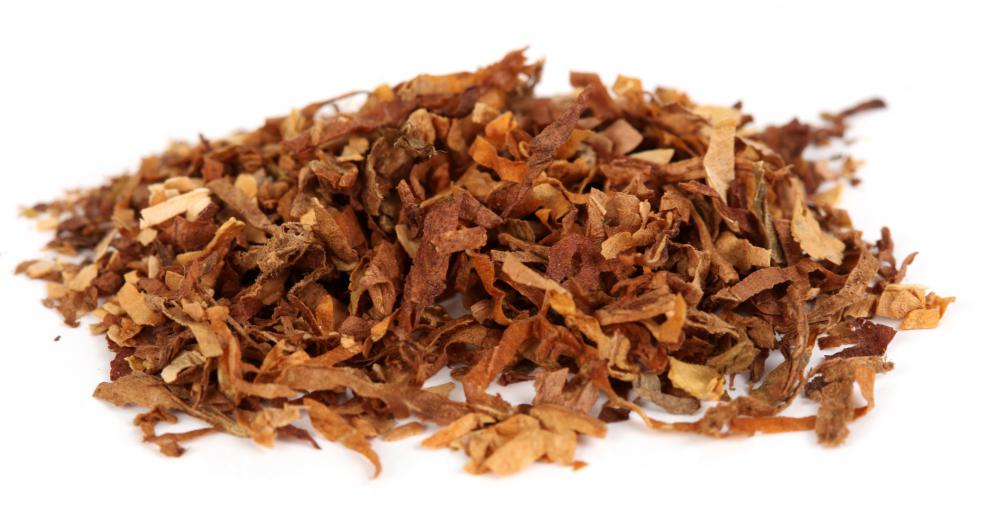At DelightedCooking, we're committed to delivering accurate, trustworthy information. Our expert-authored content is rigorously fact-checked and sourced from credible authorities. Discover how we uphold the highest standards in providing you with reliable knowledge.
What is a Betel Nut?
The betel palm, a species of palm tree found primarily in Asian countries, yields a seed known as a betel nut. Natives of the Asian and Indian countries where this tree is found use the nut much like those in Western countries use chewing tobacco or snuff. It is shaved or cut into slivers for easier chewing and is often mixed with local spices or tobacco for a more appealing flavor. Some producers wrap the ground-up betel nut and spice mixture in a fresh betel leaf and sell it in local shops.
Unlike the male-dominated world of tobacco chewing, however, a number of women in Asian countries enjoy chewing the betel nut. It contains chemicals similar to nicotine, which means that the user experiences a similar narcotic effect. Field workers and other rural inhabitants often chew it not only for its mild painkilling effects, but also for appetite suppression and digestive assistance. Betel nut is often marketed as a homeopathic cure for indigestion and is also used in some Asian toothpastes and anti-parasite medications.

The use of the betel nut has become a concern for many governments in Asia. There is compelling medical evidence that habitual chewing can cause a number of forms of cancer, especially in the mouth, throat, esophagus and stomach. Chewers also spit out the bright red remnants of the load onto public streets, creating a nuisance and raising concerns about sanitation. Several attempts at prohibiting it, or at least controlling its sale, have not been especially successful.

Another potentially dangerous situation connected with the betel nut industry is the sexual exploitation of minors. In an effort to boost sales and attract customers, local shops often employ attractive young women to promote their wares. These women and girls, called "betel nut beauties," are known for their skimpy outfits and overtly sexual sales pitches. Recent laws prohibit the use of nudity or near-nudity to sell the nuts, and many of the beauties are under the age of consent. Working in this job is sometimes viewed as an introduction to more hardcore jobs in the sex industry, including prostitution and pornography.

Betel nut is not illegal in the United States, but very few sources outside of certain Asian grocery stores import even the medicinal version. Some describe the flavor as peppery, while others say it is impossibly bitter. Mixing it with spices or tobacco seems to improve its taste, but flavored betel nut is not always embraced in certain Asian countries. Long-term chewing can stain the user's teeth black and create a number of health problems requiring serious medical intervention.
AS FEATURED ON:
AS FEATURED ON:















Discussion Comments
There is a folklore story behind the betel nut in Vietnam. It is a tradition to have it at a wedding. For centuries, betel nut has been use as a form of oral care and also as a cosmetic for women. Instead of using toothpaste, they chewed on the betel nut to clean their teeth. The red color also serves as a lipstick.
The women have copper pots to spit the remnant into. The shiny black teeth were considered beautiful. I don't know about oral cancer related to it, but my grandmother who chewed on betel nuts for most of her adult life had no cavities.
I bought a betel nut plant from an international store not knowing what its uses were. Its a nice fast growing plant with large green leaves. I keep it in a large pot on my terrace. It flourishes beautifully with lots of sunlight and water. It hasn't produced any betel nuts yet. It might need to be planted in land perhaps. I wouldn't want to do anything with the betel nuts even if it has any. I just like to keep the plant. It's a nice addition to my other house plants.
My family doesn't chew betel nut regularly but we use it for medical problems. Ayurveda doctors also prescribe betel nut in India for some conditions. We use betel nut seeds to treat intestinal parasites and infections in the urinary system. It's also a laxative and good for toothaches. We are very careful about the amounts though, because the elders say that too much is toxic. A friend of mine was advised not to use it anymore when she was diagnosed with anemia. So we use very little when we need to.
I've seen betel nuts chewed in many Asian movies but had no idea that it has such serious medical consequences. In films, betel nut appears to have mainly a traditional significance. I've seen paan and betel nut offered to guests who have come to visit or after a meal. I thought that it was just to clear the palate after having food. I had no idea that it was used as tobacco is in the west. That's a pretty unhealthy tradition. I wonder why it's so common. In the middle east region for example, women rarely smoke tobacco, although most men do. This is starting to change but I'm surprised that betel nut chewing is common among Asian women.
Post your comments